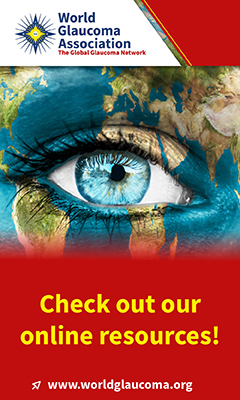advertisement

Editors Selection IGR 19-4
Glaucoma as Cause of Blindness: Has the impact of glaucoma on global blindness changed?


Comment by Tanuj Dada & Vivek Gupta on:
Bourne et al. representing the Vision Loss Expert Group (VLEG) estimated the global and regional trends from year 2000 to 2020 of the number of persons visually impaired by glaucoma and their proportion of the total number of vision-impaired individuals through a systematic review and meta-analysis of published population studies. The estimates were age-standardized to the Global Burden of Disease standard population and 95% uncertainty intervals (UIs) were reported. Moderate or severe vision loss (MSVI) was defined as visual acuity of 6/60 or better but < 6/18 (moderate) and visual acuity of 3/60 or better but < 6/60 (severe vision loss). Blindness was defined as presenting visual acuity < 3/60.
For year 2020, the authors estimated that globally, 3.6 million (UI: 2.8-4.4) were blind and 4.14 million (UI: 3.2-5.2) had MSVI due to glaucoma. Glaucoma contributed to 8.4% of the global burden of blindness, highest contribution being noted in High income countries (26%) and North Africa and Middle East (15%) and lowest in South Asia (4.9%). Glaucoma contributed to 1.4% (UI: 1.1-1.8) of global MSVI, with Latin America and Caribbean, high-income countries and Sub-Saharan Africa regions having the highest percentages (1.9-2.0%). The age-standardized prevalence of glaucoma blindness in population aged 50 years was 0.2% (UI: 0.16-0.25), the highest in Sub-Saharan Africa (0.66%). Males had higher glaucoma blindness prevalence than females across all world regions. Age-standardized prevalence of glaucoma MSVI in population aged ≥ 50 years was 0.23% (UI: 0.18-0.29).
The trend analysis shows interesting findings. Across 2000-2020, there was reduction in age standardized prevalence of glaucoma blindness by 23.3%. However, there was an increase in age standardized prevalence of MSVI due to glaucoma by 5.9% in this period. Regionally, Southeast Asia, East Asia and Oceania (18.4%), high-income countries (1.7%) and Sub-Saharan Africa (1.7%) showed an increase and other regions showed a decrease in glaucoma MSVI. Further, increases in MSVI due to glaucoma were higher in females (7.3%) compared to males (3.7%).
Shifts in proportion of blindness or MSVI due to glaucoma are likely to be influenced by relative changes in contributions of other non-glaucoma causes (such as cataract, corneal opacities, diabetic retinopathy) etc., but the observed trends in prevalence of glaucoma blindness and glaucoma MSVI are not likely to be influenced by these factors. The authors focus on blindness and MSVI due to glaucoma rather than overall morbidity due to glaucoma that has been previously reported.1,4,5 The authors acknowledge that the prevalence of glaucoma blindness and MSVI is most likely underestimated. The most common data sources, the RAAB surveys assign the most preventable or treatable cause as primary cause to survey participants and visual fields are not assessed. There is a need for coordinated studies or development of survey methodology that can address some of the limitations of RAAB surveys in assessing glaucoma blindness. These should incorporate visual field testing to prevent misclassification of field defects as no visual impairment. The decline in age-standardized prevalence of glaucoma blindness is likely driven by improvements in health seeking resulting in early diagnosis and better management. At the same time, the increases in glaucoma MSVI prevalence that is driven by changes in certain regions demonstrate that regional gaps exist, requiring locally tailored strategies.
Glaucoma remains a serious public health issue as globally it the most common cause of irreversible blindness with over 50% of glaucoma remaining undiagnosed in developed nations reaching 95% in countries with low Human Development Index.2 Overall, the present study presents compelling evidence for prioritizing glaucoma in public health interventions.
References
- Zhang N, Wang J, Li Y, Jiang B. Prevalence of primary open angle glaucoma in the last 20 years: a meta-analysis and systematic review. Sci Rep. 2021;11(1):13762.
- Soh Z, Yu M, Betzler BK, et al. The Global Extent of Undetected Glaucoma in Adults: A Systematic Review and Meta-analysis. Ophthalmology. 2021;128(10):1393-1404.
- Steinmetz JD, Bourne RRA, Briant PS, et al. Causes of blindness and vision impairment in 2020 and trends over 30 years, and prevalence of avoidable blindness in relation to VISION 2020: the Right to Sight: an analysis for the Global Burden of Disease Study. Lancet Glob Health. 2021;9(2):e144-160.
- Tham YC, Li X, Wong TY, et al. Global prevalence of glaucoma and projections of glaucoma burden through 2040: a systematic review and meta-analysis. Ophthalmology. 2014;121(11):2081-2090. 5. Quigley HA, Broman AT. The number of people with glaucoma worldwide in 2010 and 2020. Br J Ophthalmol. 2006;90(3):262-267.
Comments
The comment section on the IGR website is restricted to WGA#One members only. Please log-in through your WGA#One account to continue.Log-in through WGA#One

